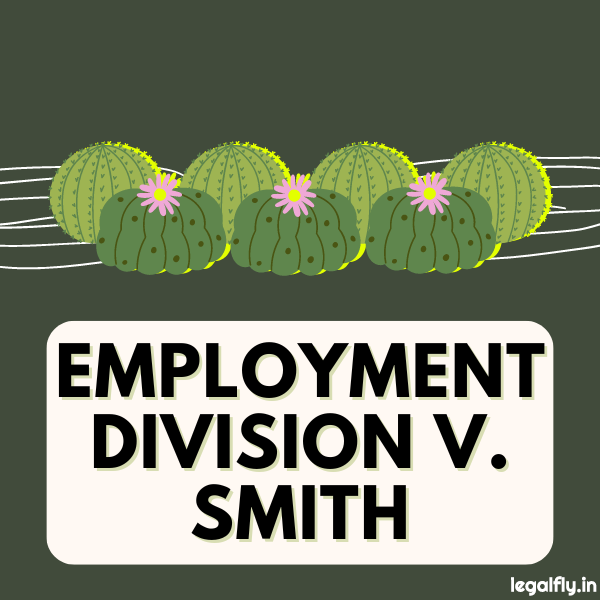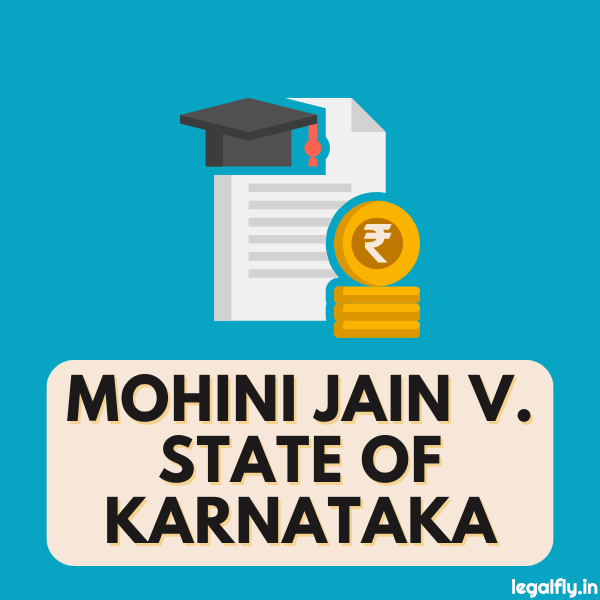Table of Contents
Case Name: Employment Division v. Smith
Court: Supreme Court of the United States
Year: 1990
Citation: 494 U.S. 872 (1990)
Introduction
The case of Employment Division v. Smith brought important questions about the limits of religious freedom under the US Constitution. It started when two Native Americans were denied unemployment benefits after using peyote, a hallucinogenic drug, for religious purposes. The Supreme Court ruled that the state’s prohibition of peyote use was constitutional and did not violate the Free Exercise Clause of the First Amendment.
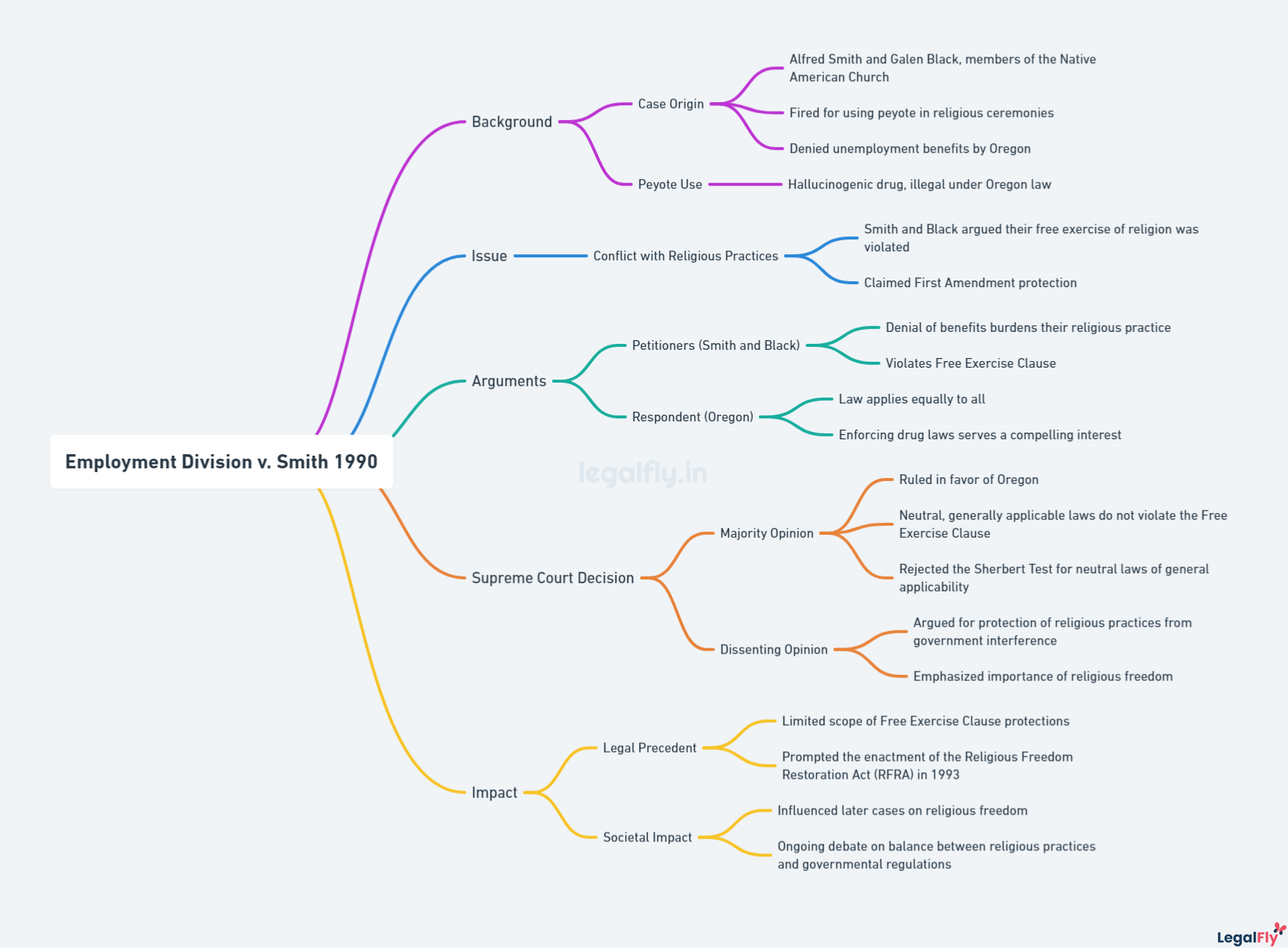
This landmark decision impacted how the law views religious practices under generally applicable laws. Justice Scalia’s majority opinion stated that allowing exceptions to every state law affecting religion would make “every citizen a law unto himself.” This ruling overturned the previous standard, which required the government to show a “compelling interest” in restricting religious practices.
Understanding the implications of this decision, including the dissenting opinions and subsequent legal developments, helps to grasp how it continues to shape the balance between individual religious rights and societal laws.
Key Takeaways
- Supreme Court upheld a state law banning peyote use.
- Ruling affected interpretation of the Free Exercise Clause.
- Justice Scalia’s opinion influenced future religious freedom cases.
Background of the Case
This case involves the dismissal of two counsellors from a drug rehabilitation organisation. They ingested peyote as part of their religious practices, leading to a legal battle over unemployment benefits.
The Petitioners: Smith and Black
Alfred Smith and Galen Black were counsellors employed by a private drug rehabilitation centre. Both were long-standing members of the Native American Church. Their use of peyote, a substance classified as a controlled drug, was central to their involvement in religious ceremonies.
Their employment ended when their peyote use was discovered. They were subsequently fired. This led to a claim for unemployment compensation, which they argued they were entitled to despite their dismissal for breaking workplace rules.
Peyote Use and the Native American Church
The Native American Church practices involve using peyote, a natural hallucinogen, in religious ceremonies. For members like Smith and Black, peyote use is integral to their spiritual beliefs and practices.
Members believe that peyote helps them connect deeply with their spirituality. Despite this, peyote is illegal under many state and federal laws. Its classification as a controlled substance means serious legal implications for its users, even in religious contexts.
Oregon Law and Unemployment Compensation
Under Oregon law, the ingestion of peyote is illegal. This extends to its use for religious purposes. When Smith and Black were terminated for peyote use, their applications for unemployment compensation were denied. The reasoning was based on them being dismissed for misconduct.
Smith and Black contended that their use of peyote was protected under the First Amendment, which guarantees freedom of religion. The legal challenge was eventually brought before the Oregon Supreme Court. The Court ruled that they were not eligible for unemployment benefits due to their breach of state law.
Legal Principles and Supreme Court Judgement
In Employment Division v. Smith, the Supreme Court addressed several key legal principles related to the Free Exercise of Religion, Compelling Interest, and the application of Neutral Law of General Applicability. The Court’s judgment had significant implications for First Amendment Interpretation.
First Amendment Interpretation
The First Amendment protects religious freedom. It prohibits the government from making laws that impede free religious practice. In this case, the interpretation centred on whether individuals could be exempt from laws if those laws impacted their religious practices.
The Supreme Court’s majority opinion emphasised that allowing exemptions based on religious beliefs could lead to numerous claims and undermine many laws. Thus, individual exemption based on religious beliefs was deemed impractical unless the laws themselves were explicitly discriminatory against religious practices.
Free Exercise Clause and Compelling Interest Test
Before Smith, the Supreme Court applied the Compelling Interest Test to Free Exercise claims. This test determined that a law burdening religious practice could be upheld only if it served a compelling state interest and was the least restrictive means of achieving that interest.
In Smith, the Court deviated from this standard. It ruled that if a law is neutral and generally applicable, it does not need to meet the Compelling Interest Test. This marked a significant shift from previous decisions, highlighting that not every law affecting religious practices requires a special justification, provided it’s neutrally applied.
Neutral Law of General Applicability
The core issue in Smith was whether individuals could ignore a neutral law of general applicability due to religious beliefs. The Supreme Court ruled that they could not. Neutral laws apply equally to everyone, regardless of religious belief.
The decision underscored that allowing exemptions based on religion could lead to a fragmented legal system where laws are obeyed inconsistently. The judgment indicated that only laws specifically targeting religions would need to meet higher scrutiny standards. Thus, the concept of Neutral Law of General Applicability remains integral in balancing religious freedom and the enforcement of laws.
In summary, Employment Division v. Smith provided a pivotal interpretation of how religious practices interact with generally applicable laws, setting a precedent for future cases dealing with the Free Exercise of Religion within the bounds of neutral legislation.
Justice Scalia’s Majority Opinion
Justice Antonin Scalia’s majority opinion in Employment Division v. Smith focused on the balance between governmental interests in regulating illegal drugs and the implications of religious exemptions under generally applicable laws.
Governmental Interest and Drug Laws
Justice Scalia argued that the government has a strong interest in regulating illegal drugs. In this case, the state’s prohibition of peyote was deemed important for maintaining public health and safety. The use of peyote, a hallucinogenic drug, was considered unlawful under state law.
Scalia emphasised that drug laws must be enforced uniformly to be effective. Allowing exceptions based on religious beliefs could weaken these regulations significantly. He pointed out that if religious reasons could justify illegal actions, it would create a patchwork of exemptions, making drug enforcement impractical and inconsistent.
Religious Exemptions and Generally Applicable Law
Justice Scalia maintained that laws that are generally applicable do not violate the First Amendment’s Free Exercise Clause, even if they incidentally affect religious practices. In Smith, the workers claimed their religious use of peyote should exempt them from the state’s drug prohibition.
Scalia refuted this argument, saying the Constitution does not require states to accommodate religious exemptions from generally applicable laws. He warned that such exemptions would challenge the government’s ability to enforce laws fairly and uniformly. He concluded that allowing religious exceptions could lead to countless exemptions and undermine the legal system.
Implications of the Decision
The ruling in Employment Division v. Smith had significant implications, affecting religious freedom, government policy on health and safety, and interpretations of constitutional obligations.
Impact on Religious Liberty
The decision limited the scope of religious liberty by ruling that a neutral law of general applicability does not violate the Free Exercise Clause. This meant individuals could not claim exemptions from laws that incidentally burdened their religious practices. It shifted the judicial stance from evaluating if a regulation infringed on religious practices to examining if the law was neutral and generally applicable. This ruling led to significant debates over the boundaries of religious freedom and prompted legislative responses such as the Religious Freedom Restoration Act.
Health and Safety Concerns
The case highlighted the balance between individual religious practices and public health and safety. By upholding the state’s authority to outlaw peyote, even for religious use, the Court underscored the government’s role in regulating substances deemed harmful. The decision supported the notion that health and safety regulations could take precedence over individual religious rights. This has broad implications for laws governing drug use, vaccinations, and other public health measures where religious exemptions might be sought.
Constitutional Tradition and Civic Obligations
The ruling reaffirmed the principle that the free exercise of religion does not exempt citizens from generally applicable laws, rooted in the precedent set by Reynolds v. United States. It emphasized that individuals must adhere to civic obligations, even when these conflict with religious beliefs. This case reinforced the idea that civic obligations and constitutional tradition shape the limits of individual freedoms. It also stressed that neutrality in law is key to maintaining a balance between personal liberties and societal needs.
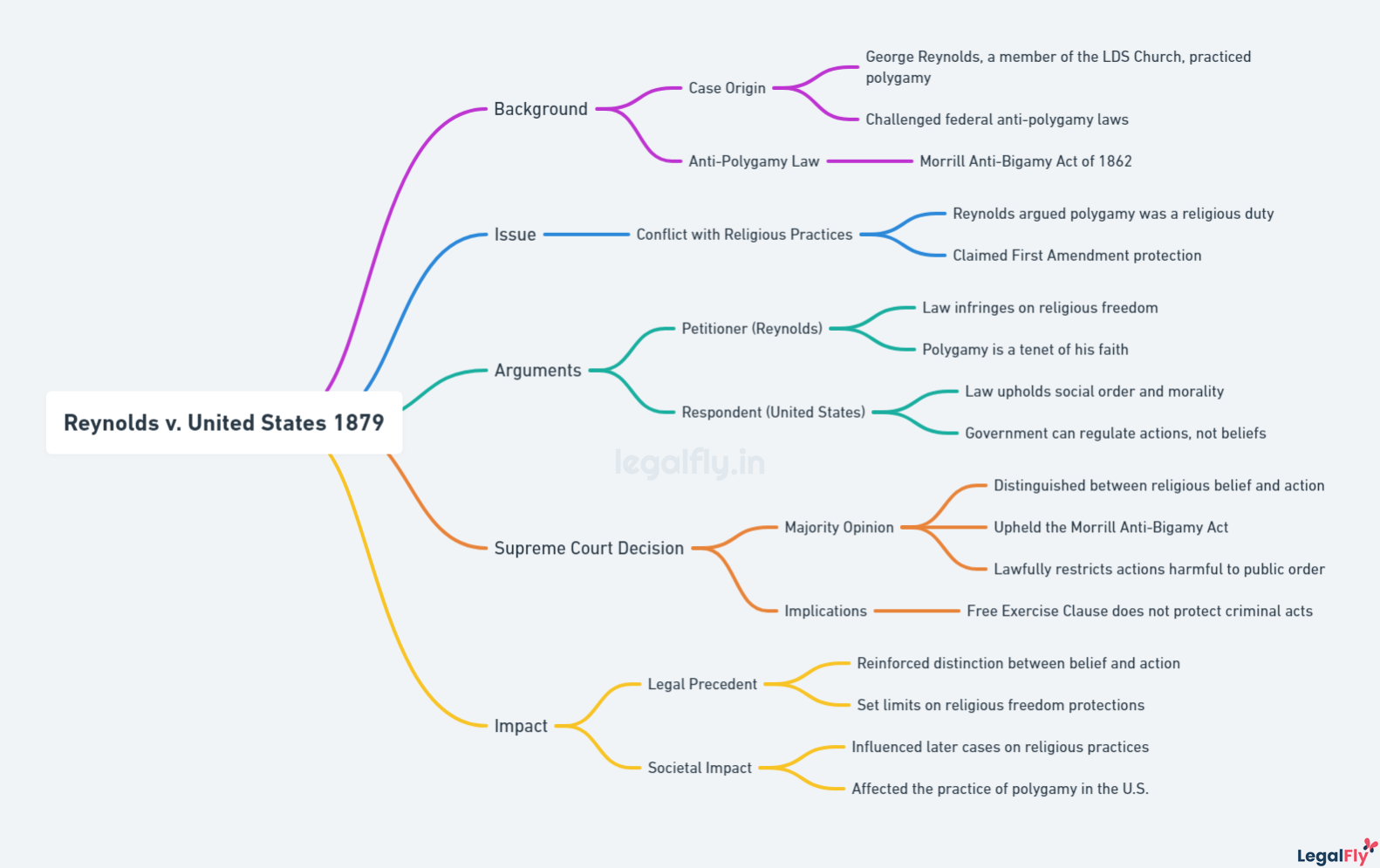
Dissenting Opinions and Subsequent Developments
The Supreme Court’s decision in Employment Division v. Smith garnered strong dissenting opinions and had notable legal and social implications. These developments have influenced interpretations of religious freedom and state interest in various contexts.
The Dissenting Justices
Some justices strongly disagreed with the majority opinion. Justice Harry Blackmun, joined by Justices Brennan and Marshall, argued that the ruling ignored the need for a compelling state interest when limiting religious practices. Blackmun contended that the state should provide a more substantial justification when denying constitutional rights related to religious ceremonies.
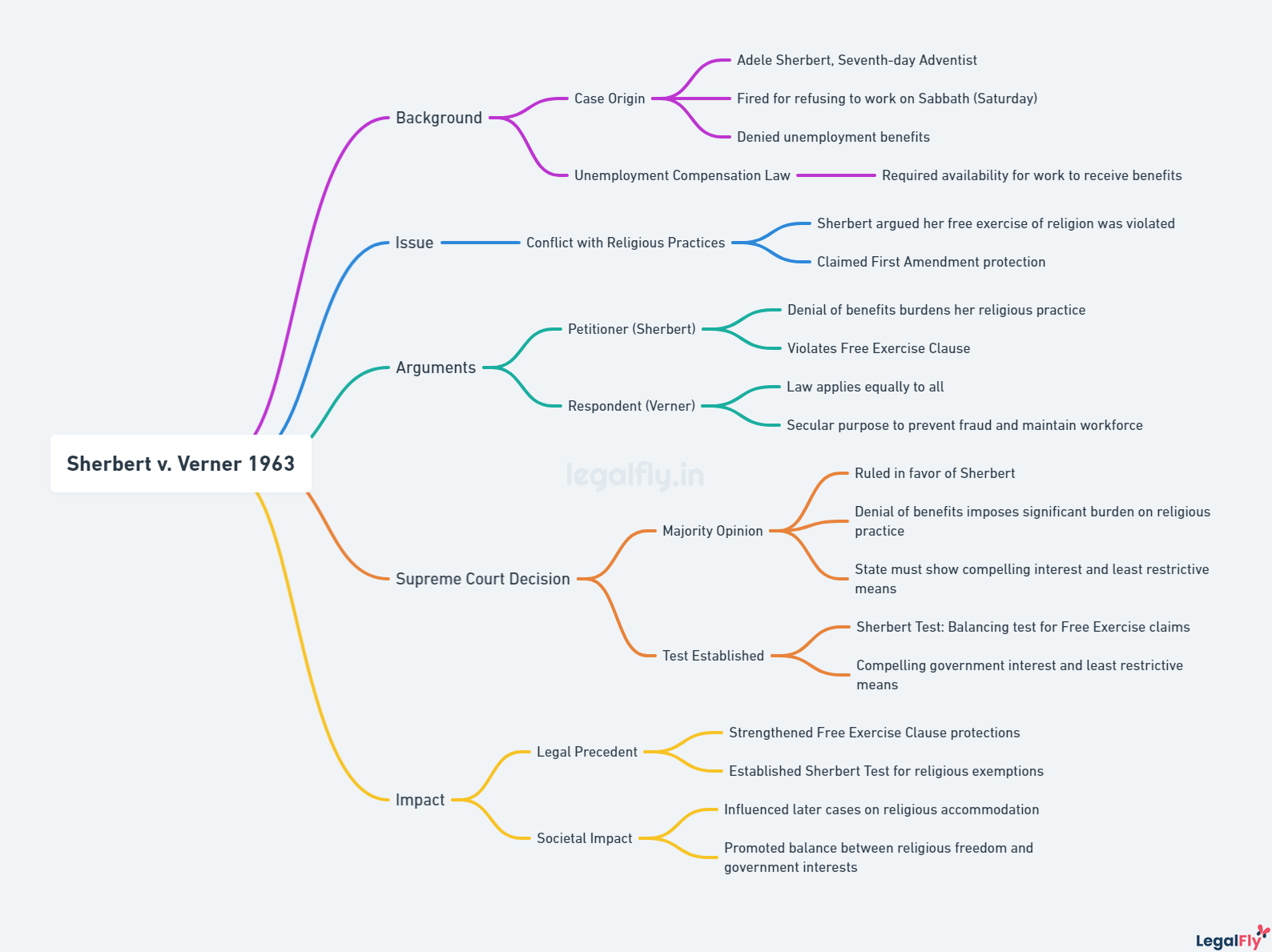
Blackmun drew comparisons to Sherbert v. Verner, where the Court applied the “strict scrutiny” standard. He argued that Oregon’s denial of unemployment benefits to individuals using peyote in religious rituals did not meet this standard. This dissent underscored concerns about the potential weakening of protections for religious liberties in subsequent cases.
Legal and Social Implications Post-Ruling
The ruling had far-reaching effects on both legal interpretations and social norms. It prompted debates on how constitutional rights and religious practices should be balanced against state interests. Many religious and civil liberties groups criticized the decision, fearing it set a precedent that could erode protections for minority religions.
In response, Congress passed the Religious Freedom Restoration Act (RFRA) in 1993. This law aimed to restore the strict scrutiny standard for cases involving religious freedom, effectively countering the Employment Division v. Smith ruling. Despite RFRA, debates continue, and later cases, such as Reynolds v. United States, have revisited these themes, shaping ongoing discussions about the limits and protections of religious expression.
Significant public and legal discourse emerged, highlighting concerns over religious freedoms and the balance between individual rights and governmental interests.
Frequently Asked Questions
The 1990 Employment Division v. Smith decision reshaped the legal landscape regarding religious freedoms and individual rights. This case addressed key issues about state law and religious practices.
What were the major outcomes of the decision in the 1990 Employment Division v. Smith case concerning religious freedom?
The ruling determined that the state could deny unemployment benefits to workers fired for using illegal drugs, even if for religious purposes. This was based on the fact that the state law in question was neutral and generally applicable.
How has the verdict in this pivotal case influenced subsequent legislation regarding religious practices?
The verdict led to the enactment of the Religious Freedom Restoration Act (RFRA) in 1993. This law aimed to ensure that religious freedom interests are protected. Under RFRA, any law that burdens religious exercise must serve a compelling government interest and be the least restrictive means of achieving that interest.
In what ways did the dissenting opinions diverge from the majority in the controversial 1990 decision on religious rights?
The dissenting justices believed that the ruling did not give sufficient weight to the First Amendment’s Free Exercise Clause. They argued that individuals should be exempt from generally applicable laws that burden their religious practices unless the state could show a compelling reason otherwise.
What precedents were shaped by this case that affected the interpretation of the First Amendment’s Free Exercise Clause?
Employment Division v. Smith set a precedent that neutral, generally applicable laws do not violate the Free Exercise Clause, even if they incidentally burden religious practices. This interpretation shifted away from the prior standard requiring the government to demonstrate a compelling interest in laws impacting religious practices.

